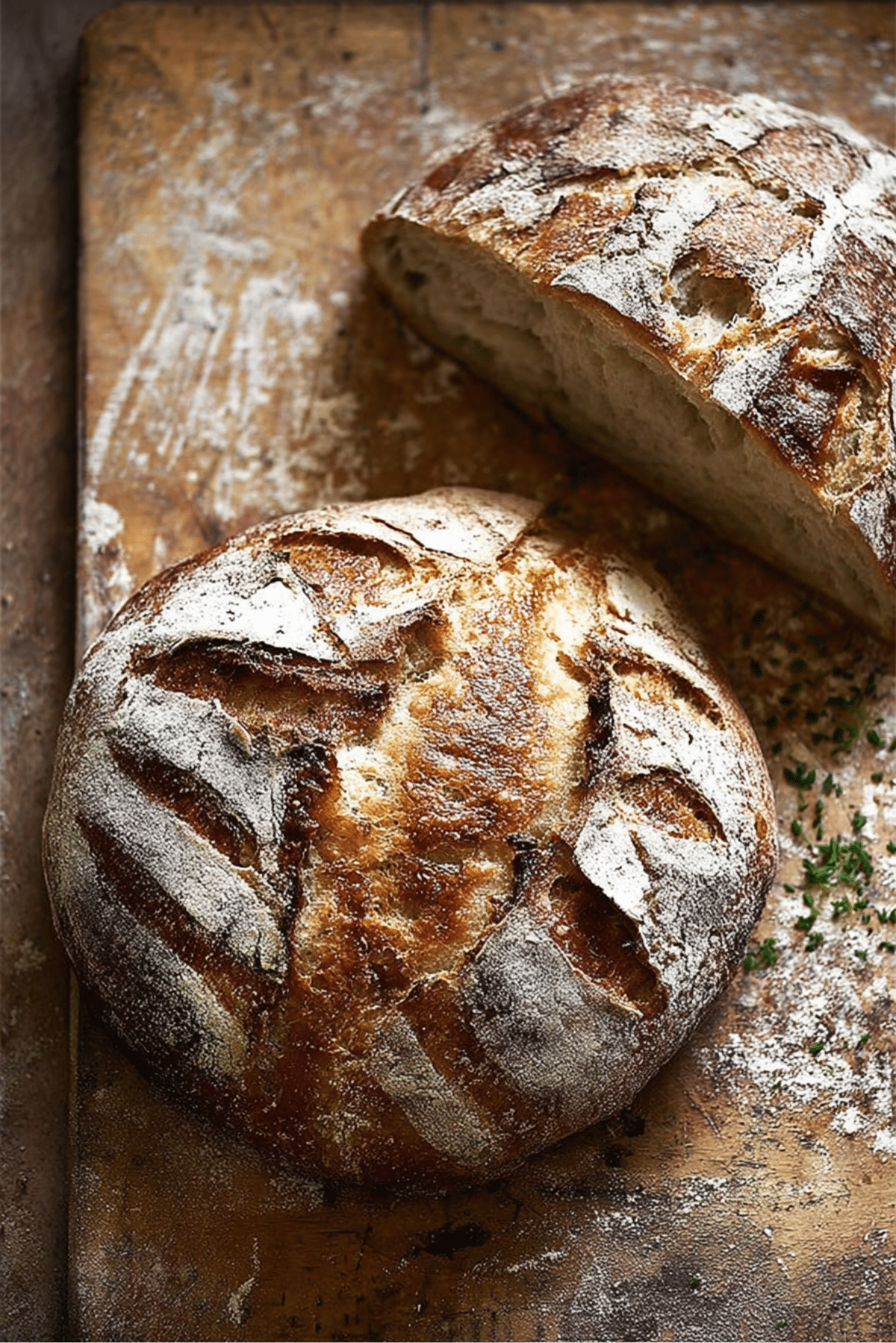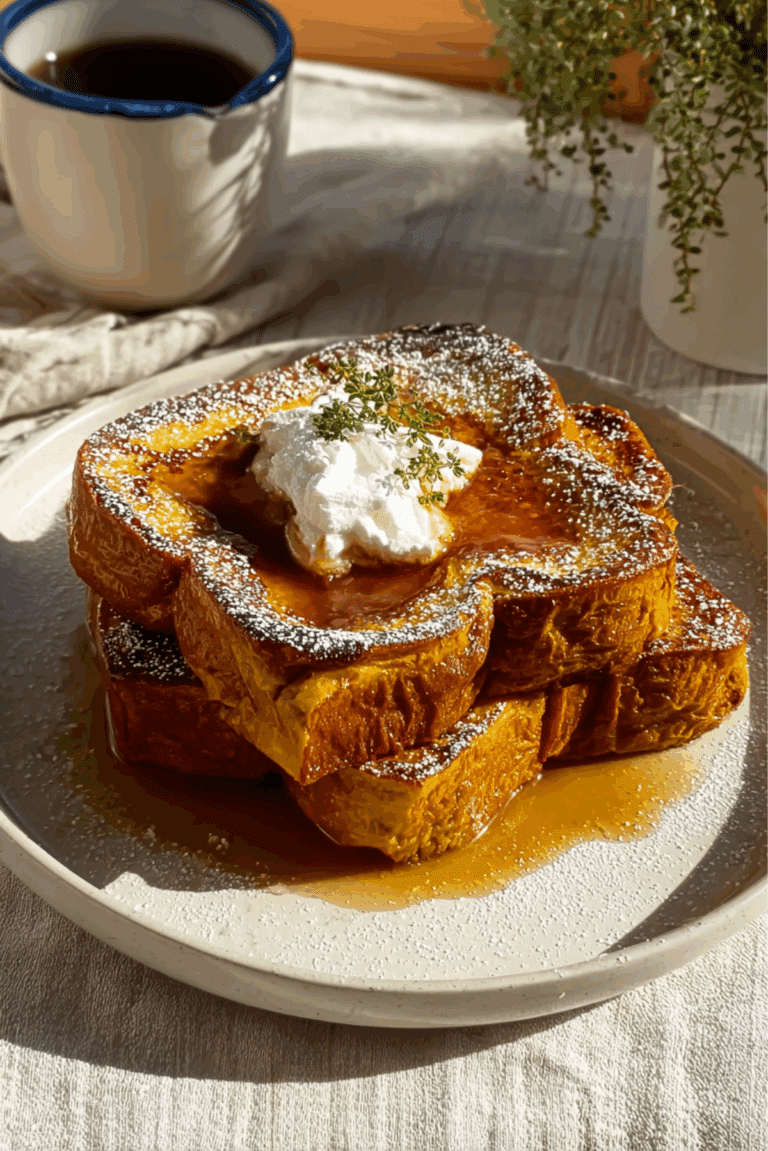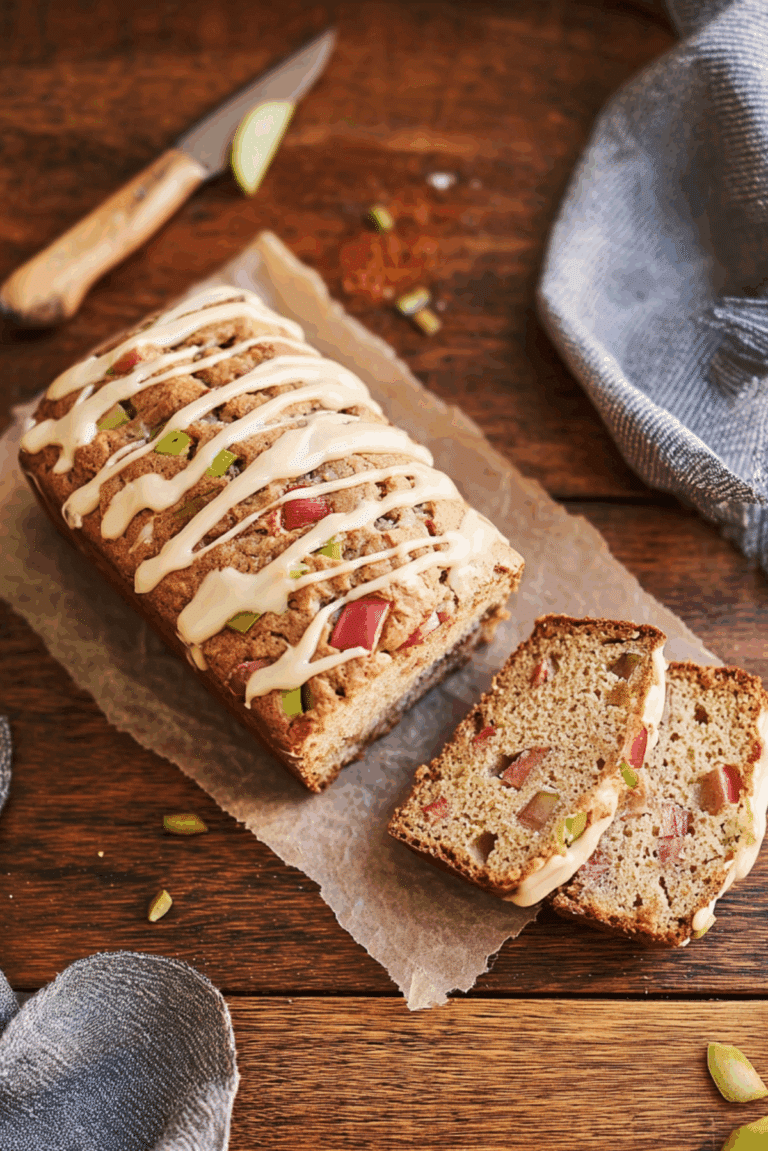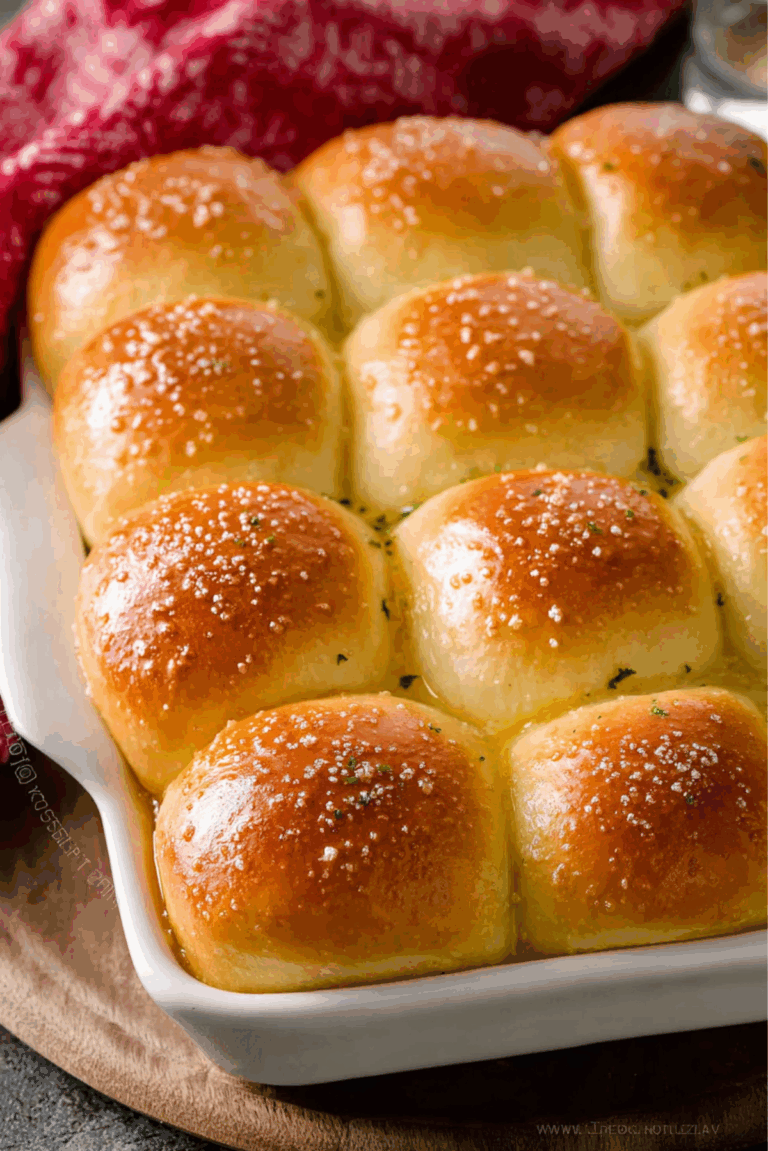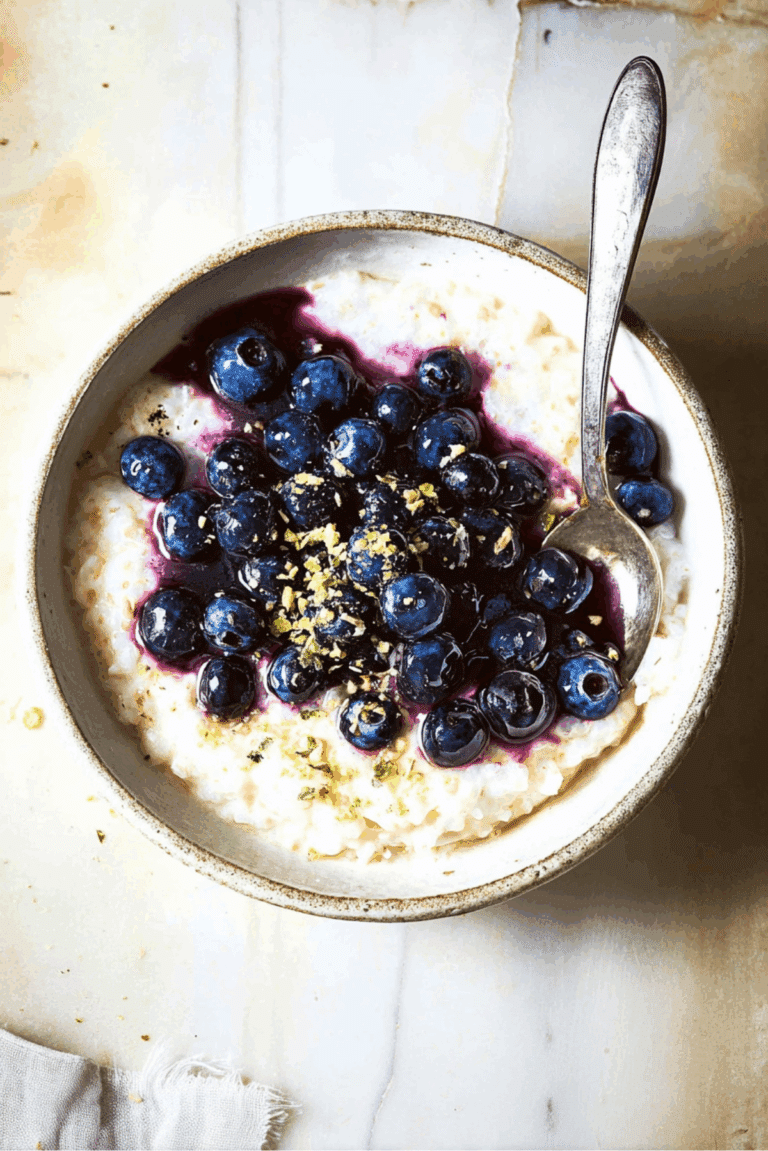Homemade sourdough bread
There is something almost magical about the moment you pull a loaf of Homemade Sourdough Bread out of the oven. The crackling sound of the cooling crust, the warm tangy aroma drifting through the kitchen, and the sight of a beautifully risen loaf make all the patience completely worth it. Trust me, you’re going to love this because every slice tells the story of time, care, and simple ingredients coming together in the most delicious way.
Behind the Recipe
This recipe was inspired by slow mornings and the comforting rhythm that comes with sourdough baking. I remember the first time I nurtured my starter, watching it bubble to life like a tiny kitchen companion. From that moment, sourdough became more than bread, it became a tradition. Every loaf feels like a gentle ritual, one that rewards you with a deep sense of accomplishment and a flavor that nothing from a store can replicate.
Recipe Origin or Trivia
Sourdough is one of the oldest forms of bread known, with roots reaching back thousands of years. Ancient cultures relied on naturally occurring wild yeast and bacteria to ferment dough which created that iconic sour aroma and chewy crumb. Sailors and settlers traveled with sourdough starters as treasured staples. Today, sourdough is celebrated for its rustic beauty, amazing texture, and the rich history baked into every loaf.
Why You’ll Love Homemade Sourdough Bread
Let me tell you, this recipe is a total game changer for any home baker.
Versatile: Perfect for sandwiches, toast, dipping in soups, or enjoying warm with butter.
Budget-Friendly: Only needs flour, water, salt, and starter.
Quick and Easy: The hands on work is minimal even though the process is slow.
Customizable: Adjust hydration, add seeds, or change flours to create your perfect loaf.
Crowd-Pleasing: Everyone loves a slice of freshly baked sourdough.
Make-Ahead Friendly: The dough can rest overnight for effortless baking.
Great for Leftovers: Stale sourdough becomes the best croutons or French toast.
Chef’s Pro Tips for Perfect Results
These small tricks can make a big difference in your sourdough success.
- Use an active, bubbly starter for the best rise.
- Hydrate the dough well which gives a more open crumb.
- Give your dough long rests which helps gluten develop naturally.
- Score confidently to guide the bread’s expansion.
- Steam your oven for a crisp shiny crust.
Kitchen Tools You’ll Need
A few key tools help you get a professional result at home.
Dutch oven: Traps steam which creates the perfect crust.
Mixing bowls: For combining and resting the dough.
Bench scraper: Helps with shaping.
Kitchen scale: Ensures accurate measurements.
Lame or sharp knife: For scoring the loaf.
Ingredients in Homemade Sourdough Bread
Now let’s look at the simple ingredients that transform into something amazing. With just a few items working together, you get a loaf full of flavor, texture, and beautiful structure.
- Bread flour: 3 cups, provides strong gluten structure for a chewy crumb.
- Active sourdough starter: 1/2 cup, brings natural fermentation and tangy flavor.
- Water: 1 to 1 1/4 cups warm, hydrates the dough and helps gluten formation.
- Salt: 1 1/2 teaspoons, enhances flavor and strengthens gluten.
Ingredient Substitutions
Here are a few alternative options if you want to adapt the recipe.
Bread flour: Replace part with whole wheat flour for a heartier loaf.
Water: Use slightly cooler water if your kitchen is warm.
Starter: A rye based starter adds deeper flavor.
Ingredient Spotlight
Sourdough starter: This living mixture is the heart of your bread, creating bubbles, rise, and complex flavor.
Bread flour: Gives your loaf structure so it rises tall and slices cleanly.

Instructions for Making Homemade Sourdough Bread
Let’s walk through the steps together so the process feels smooth, enjoyable, and rewarding.
- Preheat Your Equipment: Preheat your oven to 475 degrees with a Dutch oven inside for at least 30 minutes.
- Combine Ingredients: Mix the starter, water, and flour until shaggy. Rest for 30 minutes, then add salt and combine.
- Prepare Your Cooking Vessel: Line a bowl with a floured towel or prepare a banneton for shaping.
- Assemble the Dish: Perform stretch and folds every 30 minutes for 2 hours, then let the dough rise until puffy. Shape into a tight round and place into your lined bowl.
- Cook to Perfection: Transfer the dough into the preheated Dutch oven, score the top, cover, and bake 20 minutes. Remove the lid and bake 20 to 25 minutes until deep golden.
- Finishing Touches: Let the bread cool completely so the crumb sets.
- Serve and Enjoy: Slice and enjoy with butter, soup, or your favorite toppings.
Texture and Flavor Secrets
Sourdough gets its signature crust from high heat and steam. The long fermentation creates a tangy flavor and beautiful open crumb. The outside becomes chewy and crisp while the interior stays tender and airy. The balance of time and technique creates a loaf that tastes alive with character.
Cooking Tips and Tricks
Here are some helpful tips that will guide you to sourdough success.
- Keep your starter active for stronger fermentation.
- Wet your hands when handling sticky dough.
- Ferment longer for a deeper sour flavor.
What to Avoid
These common mistakes are easy to fix once you know them.
- Do not rush fermentation or your bread will be dense.
- Avoid adding too much flour during shaping which can toughen the loaf.
- Do not skip preheating the Dutch oven which helps with oven spring.
Nutrition Facts
Servings: 12 slices
Calories per serving: 150
Note These are approximate values.
Preparation Time
Prep Time: 20 minutes
Cook Time: 45 minutes
Total Time: about 18 hours including fermentation
Make Ahead and Storage Tips
You can prepare the dough the night before and let it ferment slowly in the refrigerator. Baked sourdough keeps well for several days at room temperature and can be frozen whole or sliced. Toasting leftovers brings back the fresh baked texture beautifully.
How to Serve Homemade Sourdough Bread
Serve it warm with butter, dip it into olive oil, pair it with soups, or use it for next level sandwiches. Thick slices make incredible toast.
Creative Leftover Transformations
Leftover slices make the best croutons, grilled cheese, garlic toast, French toast, or breadcrumbs for cooking.
Additional Tips
Lightly mist the dough before baking for a shinier crust. Add seeds or oats on top for extra texture. If the crust is too hard, wrap the loaf in a towel while it cools.
Make It a Showstopper
Score with creative patterns, dust lightly with flour before baking, and present it on a wooden board for an artisan look.
Variations to Try
- Whole wheat sourdough with a deeper earthy flavor.
- Seeded sourdough with sunflower and sesame seeds.
- Olive sourdough with chopped olives kneaded in.
- Rosemary sourdough with fresh herbs added to the dough.
- Oat crusted sourdough rolled in oats before baking.
FAQ’s
1. How do I know my starter is active enough?
It should be bubbly, doubled in size, and float in water.
2. Can I make sourdough without a Dutch oven?
Yes, bake on a stone with a tray of hot water for steam.
3. Why is my loaf dense?
It likely under fermented or the starter was weak.
4. Can I refrigerate the dough?
Yes, overnight fermentation improves flavor.
5. How long should I wait before slicing?
At least one hour to allow the crumb to set.
6. Can I use whole wheat flour?
Yes, but you may need a bit more water.
7. Why did my loaf spread out?
It may have been overproofed or too wet.
8. Can I freeze sourdough?
Yes, whole or sliced, for up to 3 months.
9. How do I refresh my starter?
Feed equal parts flour and water and let it rise.
10. Why didn’t my bread rise in the oven?
Insufficient heat, weak starter, or overproofing can cause this.
Conclusion
Homemade Sourdough Bread is more than a recipe, it is an experience filled with warmth, patience, and joy. Every step leads to a loaf with incredible flavor and texture, and once you taste it, you will understand why so many people fall in love with sourdough baking. Let me tell you, it is worth every moment and I hope your kitchen fills with the same comforting aroma that keeps me baking loaf after loaf.
Print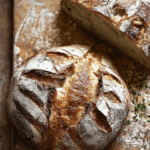
Homemade sourdough bread
- Total Time: 18 hours
- Yield: 1 loaf 1x
- Diet: Vegan
Description
A rustic, tangy, naturally leavened bread with a crisp crust and soft airy crumb, made with simple ingredients and slow fermentation.
Ingredients
- 3 cups bread flour
- 1/2 cup active sourdough starter
- 1 to 1 1/4 cups warm water
- 1 1/2 teaspoons salt
Instructions
- Mix the starter, water, and bread flour until a shaggy dough forms and rest for 30 minutes.
- Add salt and mix until incorporated.
- Perform stretch and folds every 30 minutes for 2 hours, then let the dough rise until puffy.
- Shape the dough into a round loaf and place it seam side up in a floured banneton or towel lined bowl.
- Refrigerate overnight or let rise at room temperature until nearly doubled.
- Preheat a Dutch oven to 475 degrees for 30 minutes.
- Transfer the dough into the Dutch oven, score the top, and bake covered for 20 minutes.
- Remove the lid and bake 20 to 25 more minutes until deep golden brown.
- Cool completely before slicing.
Notes
- Use an active, bubbly starter for the best rise.
- Long fermentation improves flavor and texture.
- A kitchen scale gives the most accurate measurements.
- Prep Time: 20 minutes
- Cook Time: 45 minutes
- Category: Bread
- Method: Baking
- Cuisine: Traditional
Nutrition
- Serving Size: 1 slice
- Calories: 150
- Sugar: 0g
- Sodium: 220mg
- Fat: 0g
- Saturated Fat: 0g
- Unsaturated Fat: 0g
- Trans Fat: 0g
- Carbohydrates: 32g
- Fiber: 1g
- Protein: 5g
- Cholesterol: 0mg
Keywords: sourdough bread, homemade bread, artisan loaf, natural fermentation

